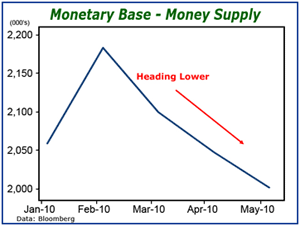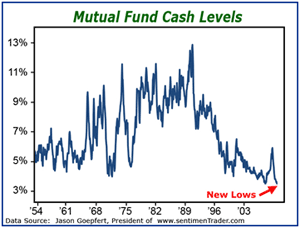Results 1 to 1 of 1
Thread Information
Users Browsing this Thread
There are currently 1 users browsing this thread. (0 members and 1 guests)
-
08-04-2010, 10:40 PM #1Senior Member


- Join Date
- May 2007
- Location
- South West Florida (Behind friendly lines but still in Occupied Territory)
- Posts
- 117,696
GDP Report Economic Forecast: Economy is in shambles
GDP Report Adds to My Bearish U.S. Economic Forecast
Economics / Double Dip Recession
Aug 04, 2010 - 07:44 AM
By: Claus_Vogt
The Commerce Department confirmed what Iâve been saying for weeks: The economy is in shambles, there is no growth momentum and the next bear market leg is about to strike!
Last Friday the Commerce Department reported that our GDP grew at an annual rate of 2.4 percent in the second quarter. Thatâs down from 3.7 percent in the first quarter and 5 percent in the fourth quarter of 2009.
Whatâs more, two of the GDPâs contributors are out of steam, and wonât have much to add to future numbers â¦
One was state and local government spending. As these stressed-out governments try to deal with their own river of red ink, spending is bound to come to a screeching halt.
And a second contributor was inventory buildup, which was less than half the prior quarterâs number and the quarterâs before that. So unless consumers go on a wild spending spree, businesses wonât be restocking their shelves in the foreseeable future.
This is precisely why I say the recovery is dying a slow death.
In addition, GDP figures for the past three years were revised â downward in seven of the 12 quarters â because consumer spending grew slower and home building fell harder than had been estimated. This means, without doubt, that the recession is worse than government officials openly care to admit.
Now, let me update you on my cyclical model, which is designed to catch medium- to longer-term trends in the business and market cycles.
Itâs composed of four major components:
Component #1â Fundamental Valuation
Valuation metrics like price/earnings ratios or dividend yields never fell to undervalued levels. Even at the low point in March 2009, they quickly rose back to overvalued levels as soon as the stock market recouped a good part of its losses. Here we are now with the S&P 500 sitting below its all-time highs, but weâre looking at a market thatâs overvalued as much as 50 percent.
Or, to put another way, this stock market could easily decline by 50 percent before my fundamental valuation metrics signal real long-term buying opportunities. And I fully expect that weâll see those levels before this secular bear market is over.
Component #2â Monetary Conditions
The medium-term uptrend, which started in March 2009, was mainly liquidity driven. A lot of liquidity was getting pumped into the markets, but this has changed and has turned bearish.
If you look at liquidity indicators like credit growth or money supply growth, youâll see that liquidity has dried up. Not just in the U.S.; itâs a global phenomenon.

Since this medium-term bear market rally was a reaction to monetary and fiscal stimulus, I think weâre running on empty, and the most important driver of this uptrend has just ceased to exist.
As you can see on the chart to the right, the money supply growth is going down. That foretells of inflation, which is not good for economies orstocks. Especially when the market is still fundamentally overvalued!
Component #3â Sentiment Indicators
Sentiment indicators reached levels in March and April that indicated high complacency and extreme optimism. Some put/call ratios fell to levels last seen at the highs of the stock market bubble in 2000.
The most amazing thing was that the cash level of mutual funds fell to a new record low in March and April 2010. Lower than in 2000 and lower than the summer of 2007, and we all know how those two events played out!

The importance of mutual fund cash levels is easy to understand. If all mutual funds are heavily invested and have very little cash, there is not a lot of fuel to push the market higher. So when you see mutual fund cash levels come down, itâs usually a sign of a topping market.
The scary thing is: What will the fund managers do if investors decide to get money out of their mutual funds? Theyâll be forced to sell stocks, no matter what the market is doing.
Itâs called âmeeting redemptions.âJoin our efforts to Secure America's Borders and End Illegal Immigration by Joining ALIPAC's E-Mail Alerts network (CLICK HERE)


 LinkBack URL
LinkBack URL About LinkBacks
About LinkBacks




 Reply With Quote
Reply With Quote

Panama Might Help Shut Down the Invasion of Illegals, As the...
05-09-2024, 10:13 PM in illegal immigration News Stories & Reports